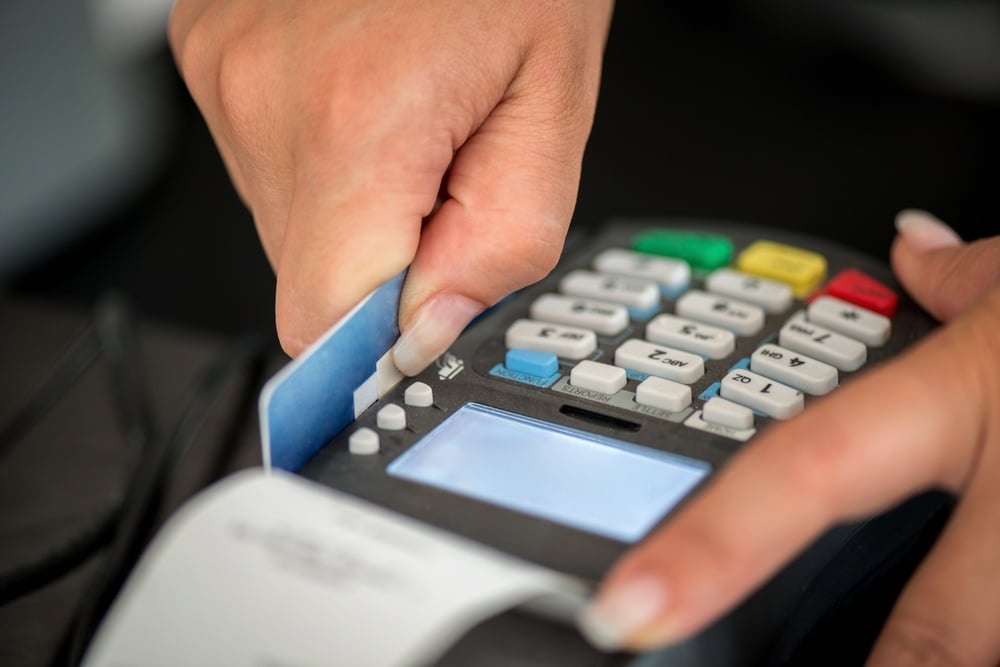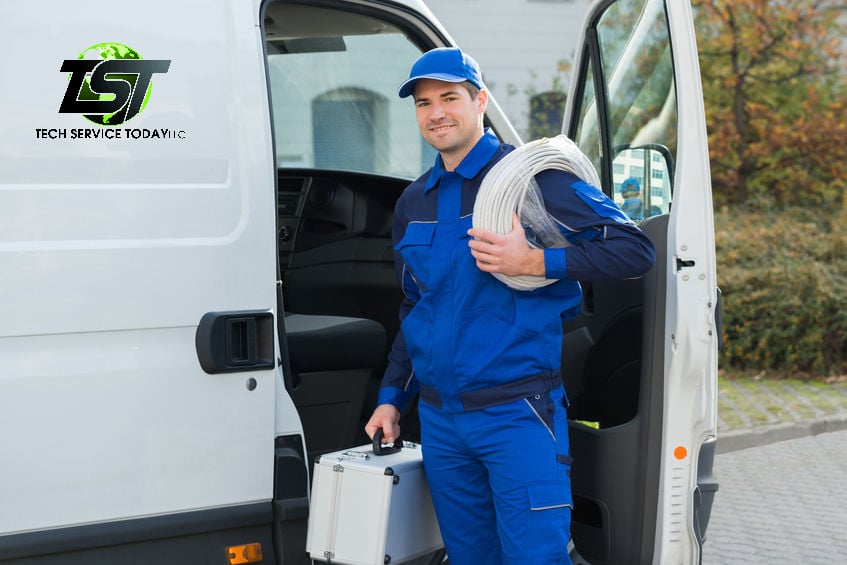
It can be terribly difficult to find positive things to discuss when the world is wrought with strife and frustration. But that's what makes such endeavors so important.
It would be easy to join the bandwagons of people ranting about the horrible impact coronavirus has had on our world. But I’ve always preferred Robert Frost’s philosophy of choosing the road less traveled by because it really does make all the difference.
Besides, change is both inevitable and constant. Complaining about it accomplishes nothing. That’s why today we are focusing on three ways in which the coronavirus pandemic has actually accelerated the future.
1. CONTACTLESS PAYMENT TECHNOLOGIES - THE NEW STANDARD
On a recent trip to the grocery, I stood a safe 6-feet behind a woman in line waiting to check out. As the teenage boy working as a cashier scanned the items from her cart, the woman suddenly screamed at him through the plexiglass wall separating them, saying “YOU TOUCHED YOUR FACE!” She was absolutely outraged that he had touched his cheek – despite the fact that he was wearing a mask – and she refused to let him continue scanning her items until he lathered his hands with hand sanitizer.
The funny thing about this interaction is what happened when the boy finished bagging her groceries and read her the total. This woman slid her credit card through the reader and typed in her PIN number on the keypad….with her bare fingers. To top it off, she used that same hand to swipe her hair back – exposing the self-righteous look that had been plastered on her face ever since she saved the world by screaming at this boy - before pushing her cart out of the store.
While some people are obviously more aware of when others touch their faces than they are of their own actions, coronavirus has made us all acutely aware of the dangers associated with touching anything that others have been in contact with. Knowing that we might catch coronavirus by touching cash or a credit card terminal in a retail store or restaurant has already resulted in a huge increase in the use of touchless payment methods/services.
According to a survey released last month by the Strawhecker Group and the Electronic Transactions Association, U.S. small businesses have already seen a 27% increase in customers using services like Apple Pay or Google pay on their mobile devices when they check out (both are touchless payment solutions). That’s a pretty good indication that traditional credit swipe readers with PIN pads may become a thing of the past in the coming months as consumers avoid any payment device that requires human contact. And for those same reasons, we also expect to see a sharp rise in the use of self-checkout registers.
2. GOODBYE CASHIERS....HELLO SELF-CHECKOUT TERMINALS
Self-checkout technologies are nothing new. Most of us have pumped gas by ourselves and paid for it at the pump without any human intervention at all. And many of us have gone through the self-checkout aisle at our local grocery rather than waiting in a long line (which, in my case, rarely reduces the time I spend in the store because one item always seems to cause a scanning error that locks down the terminal until a manager comes over and manually clears it).
Until this year, retail companies had the luxury of time to dip their toes in the water and slowly start testing/rolling out new self-checkout terminals. In fact, it was several years ago that my local Home Depot store replaced two of their ten-or-so cashier registers with self-checkout terminals. But when I visited that store a few months ago - just before Covid-19 started causing shutdowns - I noticed they had now replaced all but two of the traditional human-occupied cashier stations with self-checkout registers. This transition from human cashiers to self-checkout registers was a relatively slow one that spanned at least the last five years for The Home Depot.
Suddenly Covid-19 arrives, forcing us to change the ways we’ve always done so many things...especially shopping. The need for social distancing and contactless solutions are no longer lofty dreams that retailers can address when they feel the time is right for them to explore those options. With the CDC, the Federal & State governments, and even consumers demanding changes that prevent the spread of coronavirus, we can expect to see self-checkout point-of-sale registers/terminals start appearing in retail environments everywhere…not to mention a lot more Plexiglas walls at the checkout counters of retail environments where a human cashier is still necessary.
3. IF YOU DON’T DELIVER, YOU WON’T SURVIVE
If you are in the retail or restaurant industry and don’t already know this, then you have somehow remained oblivious to the ever-increasing number of Amazon, FedEx, UPS, and/or postal service delivery trucks & vans roaming every street in America several times each day. Not to mention the growing number of Grubhub, Uber Eats, and local pizza delivery drivers in every town.
The convenience of being able to get products or meals without leaving our homes has always made delivery appealing. But the coronavirus pandemic has now made delivery a mandatory condition of survival for many businesses. Especially in the restaurant industry.
While most pizza shops have always operated on a delivery model, the majority of family dining (eat-in) restaurant chains have only recently started introducing things like curb-side pickup and delivery. Regardless of where restaurant chains were in the process of rolling out such options, the coronavirus pandemic is forcing them to change quickly or perish.
And offering delivery may not be just a short-term solution. None of us really knows how long it will be before people feel comfortable eating around strangers in restaurant dining rooms again. In fact, it wouldn’t surprise too many restaurant professionals if regulations are introduced in the near future requiring dine-in restaurants to increase the amount of space between tables.
Such social distancing requirements will obviously reduce a restaurant’s dine-in capacity (the total number of patrons who can be seated in their restaurant at any given time) and therefore also reduce their daily revenue potential. Without having curb-side pickup and/or delivery revenues to make-up for the shortfall of income from dine-in patrons, many restaurants won’t survive.
But restaurants aren’t the only industry facing this Delivery Or Death dilemma. For the past 20 years, we’ve witnessed a retail apocalypse for the same reason. Historic, iconic retail brands that have been a part of our society for 100 years and longer – chain stores like Sears, Kaufmann's, Kmart, Kinney Shoes, Borders Books, Circuit City and Toys R Us –have closed their doors for good since the turn of the century. And the reason for their demise is primarily the Internet and ecommerce.
In the old days, consumers’ product purchases were limited to whatever was in stock at the stores in their hometowns. In fact, the latest fashions introduced each year in Paris, Milan, New York, and LA often took several months – if not years – to reach the stores in rural America. But the Internet and ecommerce websites changed all that by providing immediate and equal access to new products as soon as they were released – regardless of where you lived. Plus, they offer the convenience of having those products delivered to our front doors without ever having to leave our homes.
Newer companies like Amazon that were built exclusively on an ecommerce foundation have thrived – both before and during the coronavirus pandemic. But the same can’t be said for many of the traditional, brick & mortar retailers who still rely on consumers visiting their stores. Some progressive companies like Walmart saw the writing on the wall years ago and found a way to roll out ecommerce solutions offering the convenience of online ordering combined with curb-side pickup and/or delivery.
Unfortunately, there are countless other retailers who still hadn’t built an ecommerce business model that could sufficiently supplement – or even replace - their in-store business when the pandemic broke loose.
For the restaurants and retailers who survive the reductions in both foot traffic and sales caused by the coronavirus shelter-in-place orders, there will be one truth they can no longer ignore: Their survival will be predicated on their ability to deliver their goods to consumers' homes and/or make them available for curb-side pickup.
If your business is among those faced with the immediate need to roll out new touchless point-of-sale solutions (self-checkout terminals, contactless credit card readers, etc.), please remember that Tech Service Today is here to help. Whether you have one store or thousands, we can manage your project and provide field technicians with whatever skills you require, anywhere in North America, precisely when and where you need them.
Do you have more sites with networks than you have IT staff members?
It doesn't take a rocket scientist to install a network. But to ensure that your equipment, racks and cabling are installed properly in an organized, efficient fashion, it does require the talents of a skilled IT technician. If you need help installing or cleaning up your network, contact Tech Service Today to have a skilled, seasoned Technician dispatched to your site.
At Tech Service Today, We SIMPLIFY IT, SERVICE IT, and SOLVE IT.
Call TST when you need on-site technical services anywhere in North America, even same-day when time is of the essence.
Call (800) 973-2022 (option 1), or Email us at Service@TechServiceToday.com

